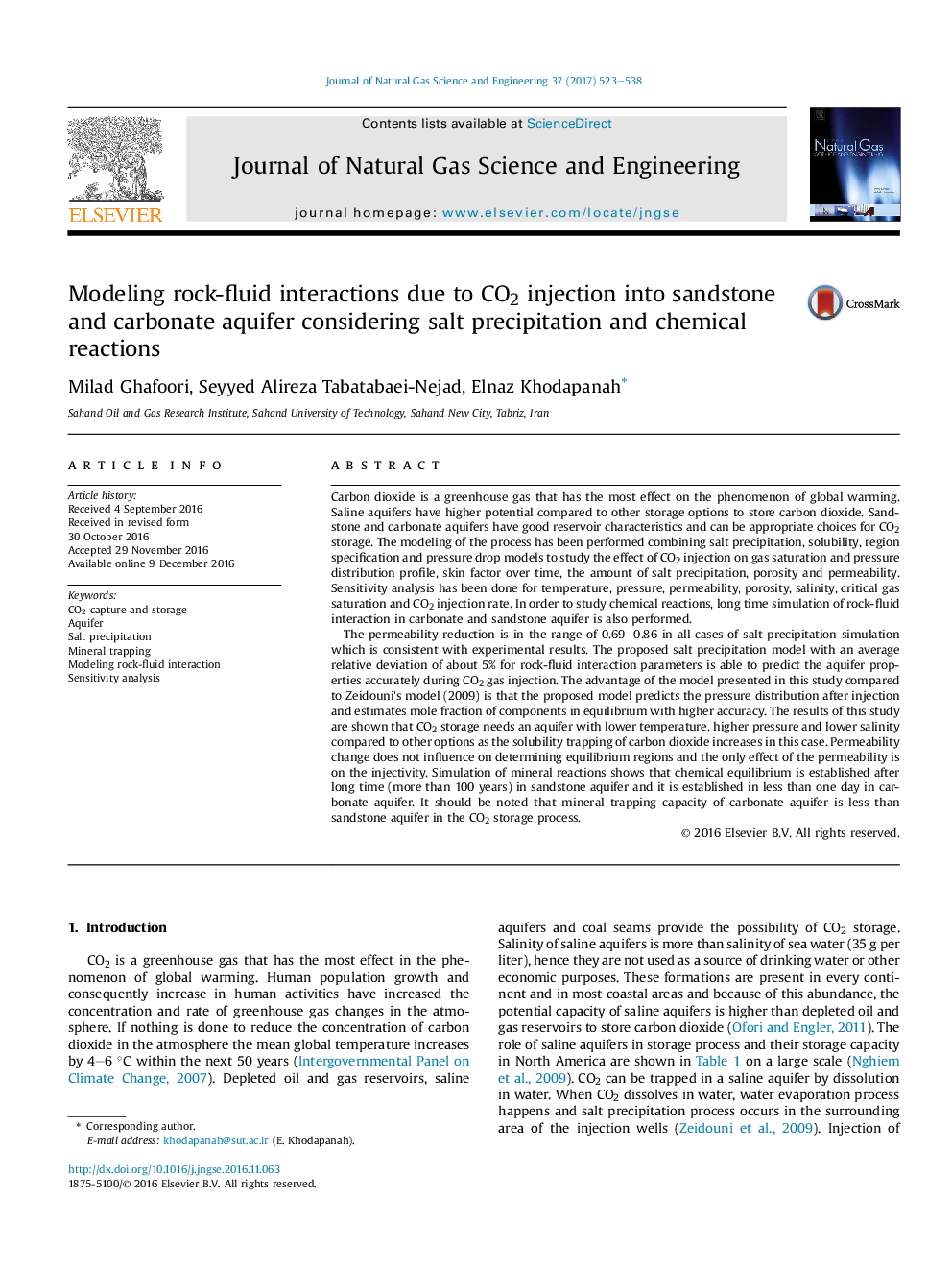| Article ID | Journal | Published Year | Pages | File Type |
|---|---|---|---|---|
| 5485242 | Journal of Natural Gas Science and Engineering | 2017 | 16 Pages |
Abstract
The permeability reduction is in the range of 0.69-0.86 in all cases of salt precipitation simulation which is consistent with experimental results. The proposed salt precipitation model with an average relative deviation of about 5% for rock-fluid interaction parameters is able to predict the aquifer properties accurately during CO2 gas injection. The advantage of the model presented in this study compared to Zeidouni's model (2009) is that the proposed model predicts the pressure distribution after injection and estimates mole fraction of components in equilibrium with higher accuracy. The results of this study are shown that CO2 storage needs an aquifer with lower temperature, higher pressure and lower salinity compared to other options as the solubility trapping of carbon dioxide increases in this case. Permeability change does not influence on determining equilibrium regions and the only effect of the permeability is on the injectivity. Simulation of mineral reactions shows that chemical equilibrium is established after long time (more than 100 years) in sandstone aquifer and it is established in less than one day in carbonate aquifer. It should be noted that mineral trapping capacity of carbonate aquifer is less than sandstone aquifer in the CO2 storage process.
Related Topics
Physical Sciences and Engineering
Earth and Planetary Sciences
Earth and Planetary Sciences (General)
Authors
Milad Ghafoori, Seyyed Alireza Tabatabaei-Nejad, Elnaz Khodapanah,
